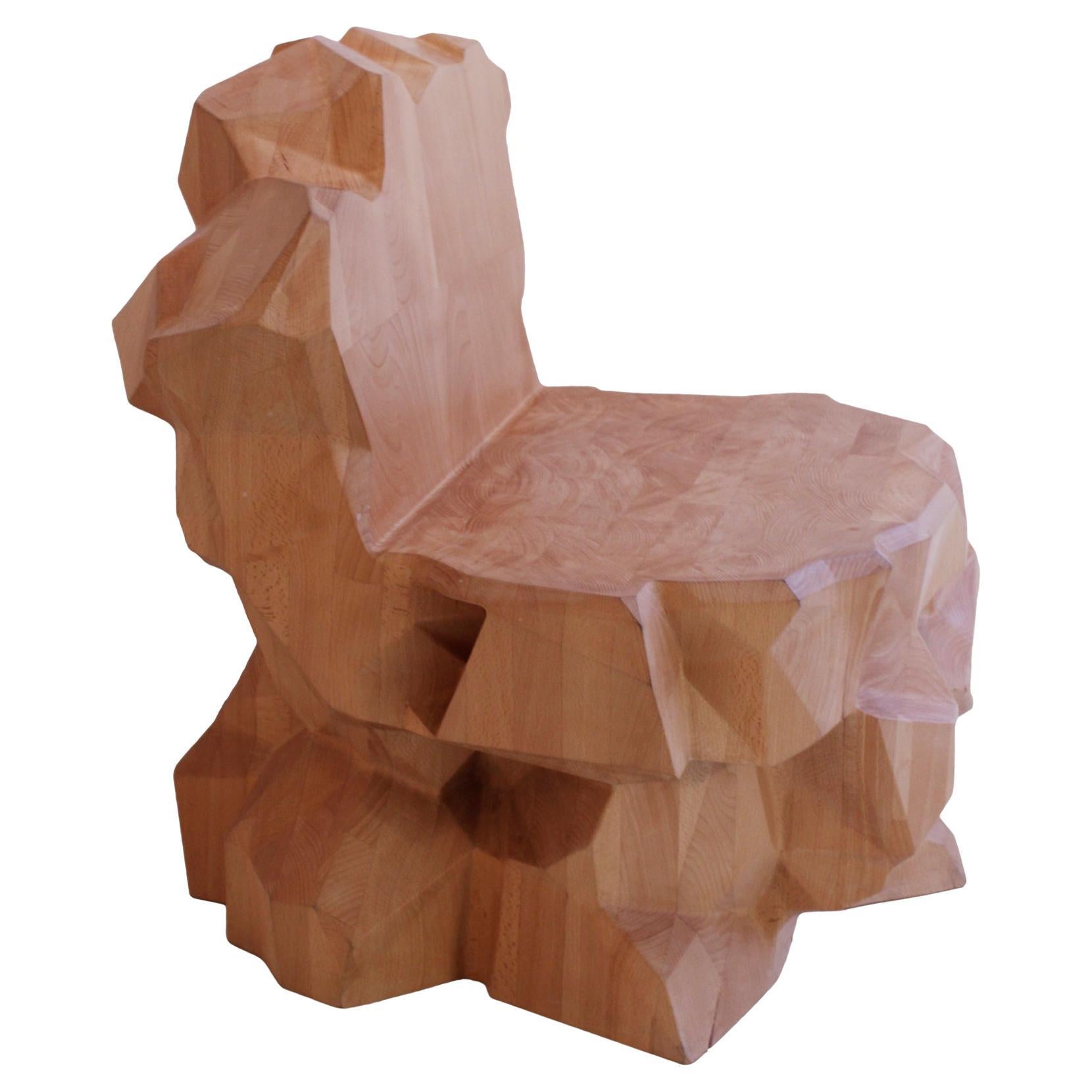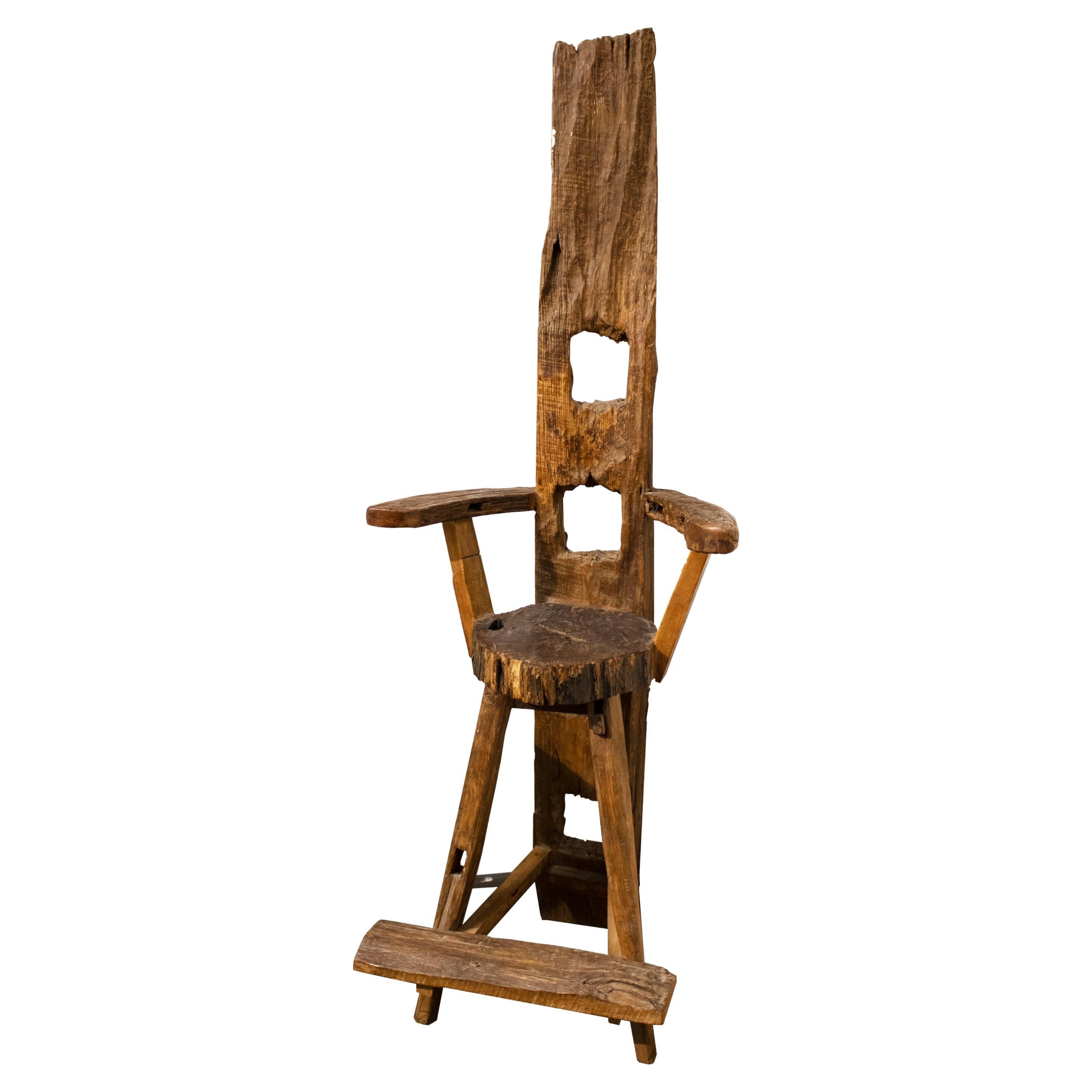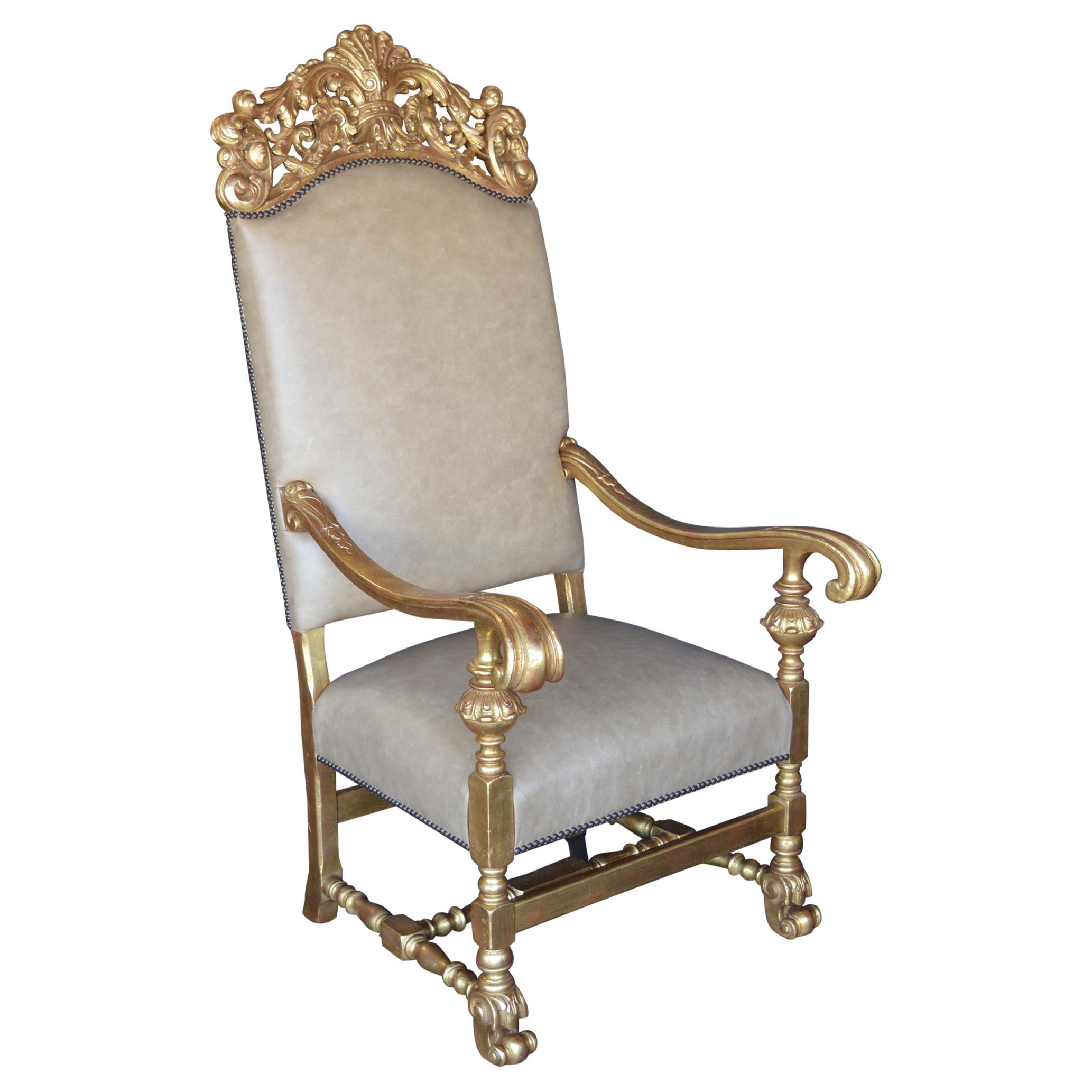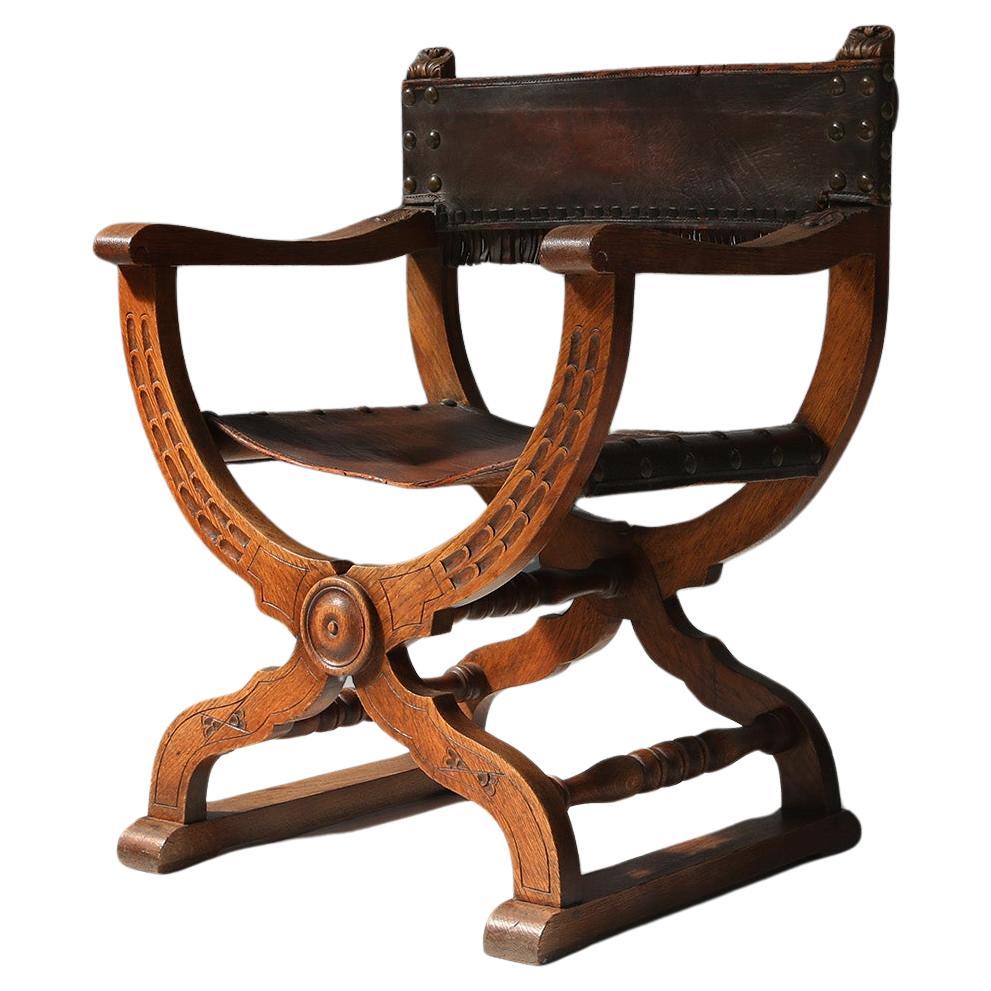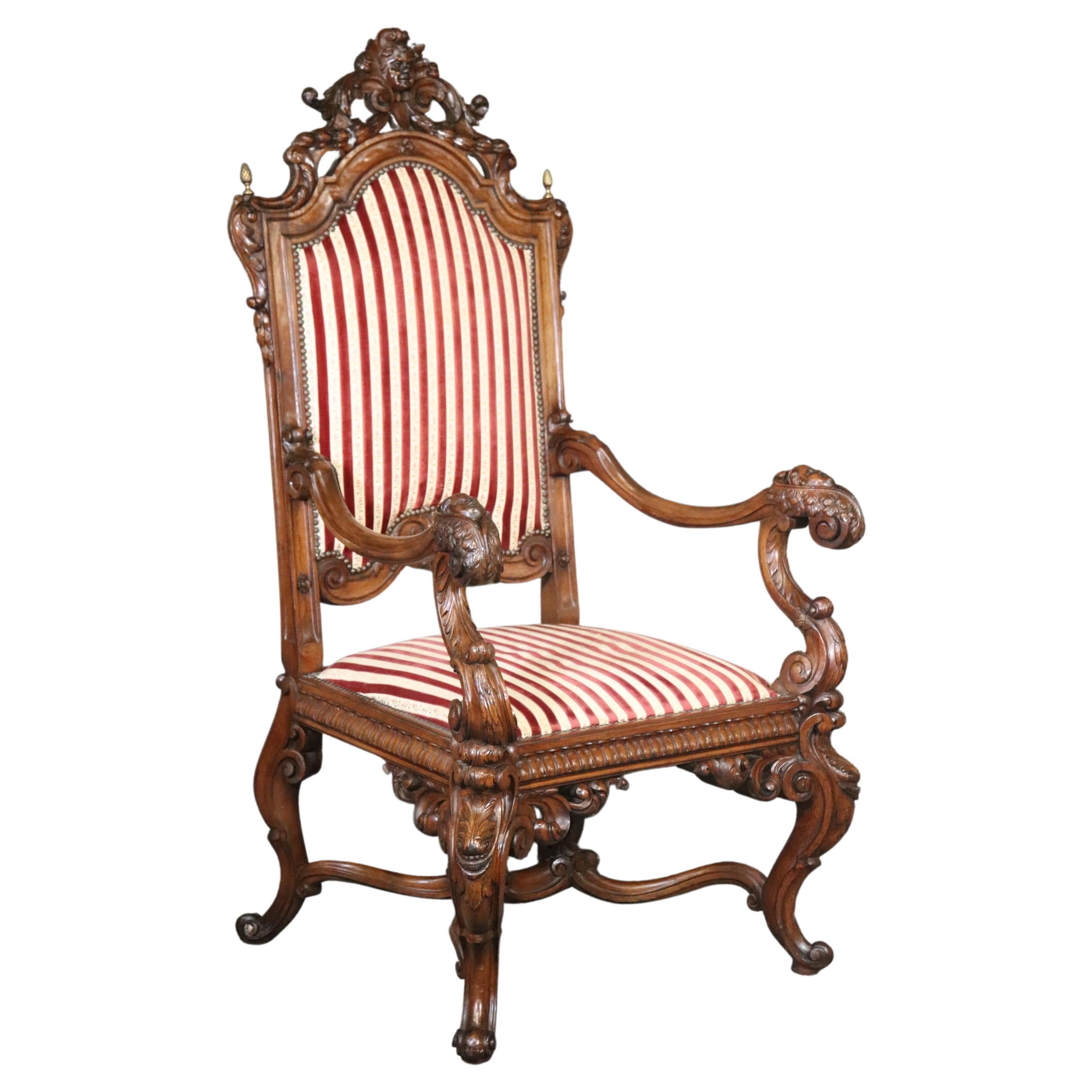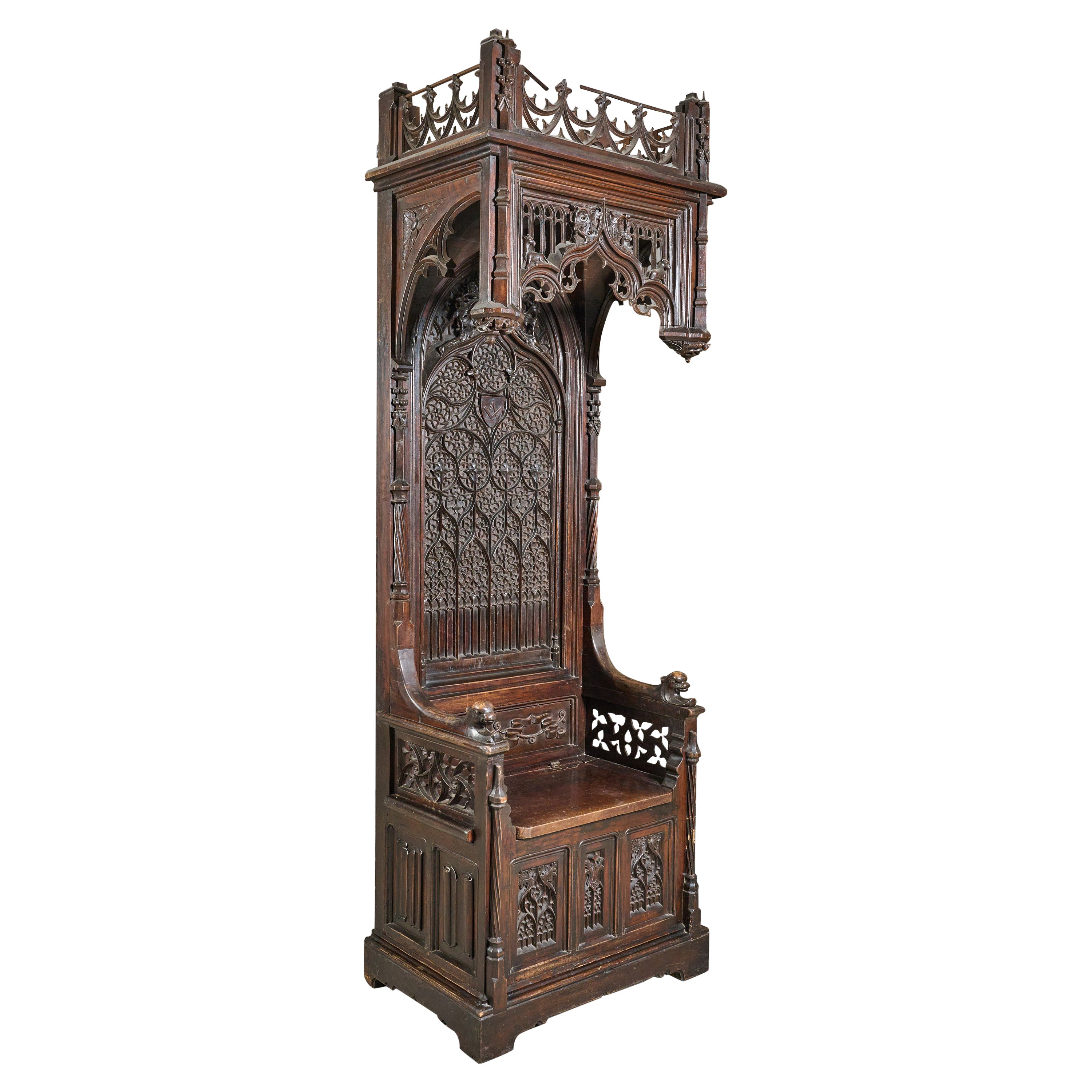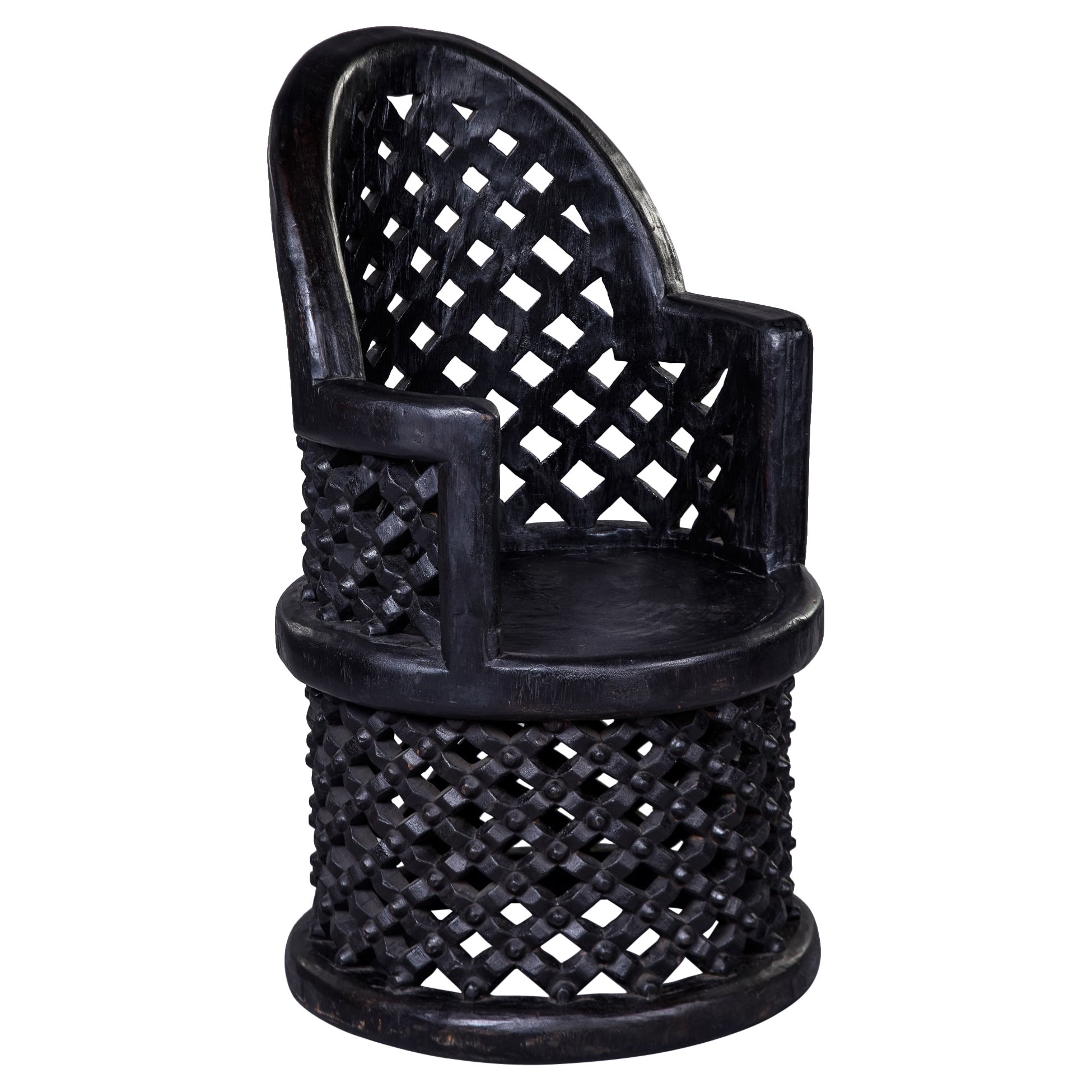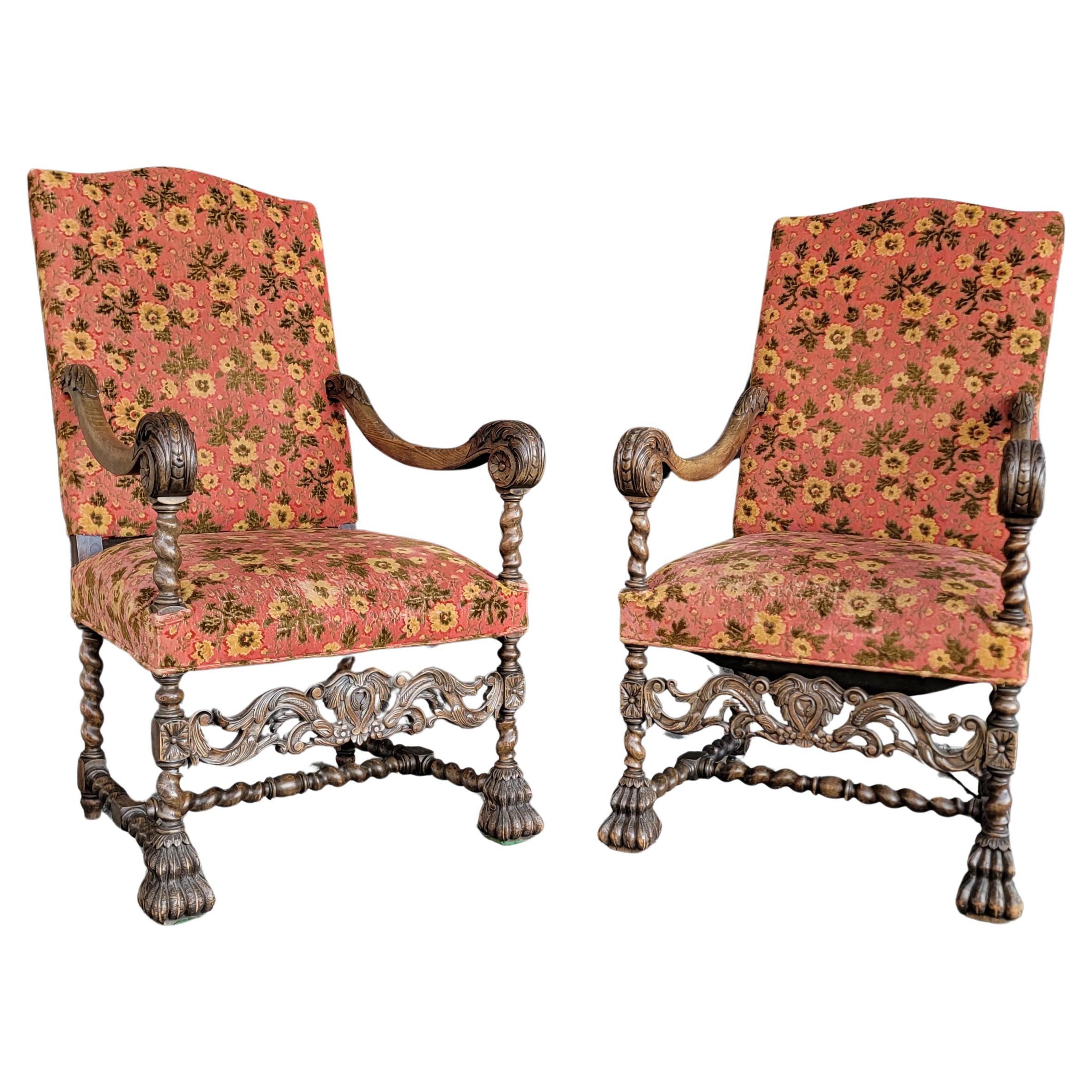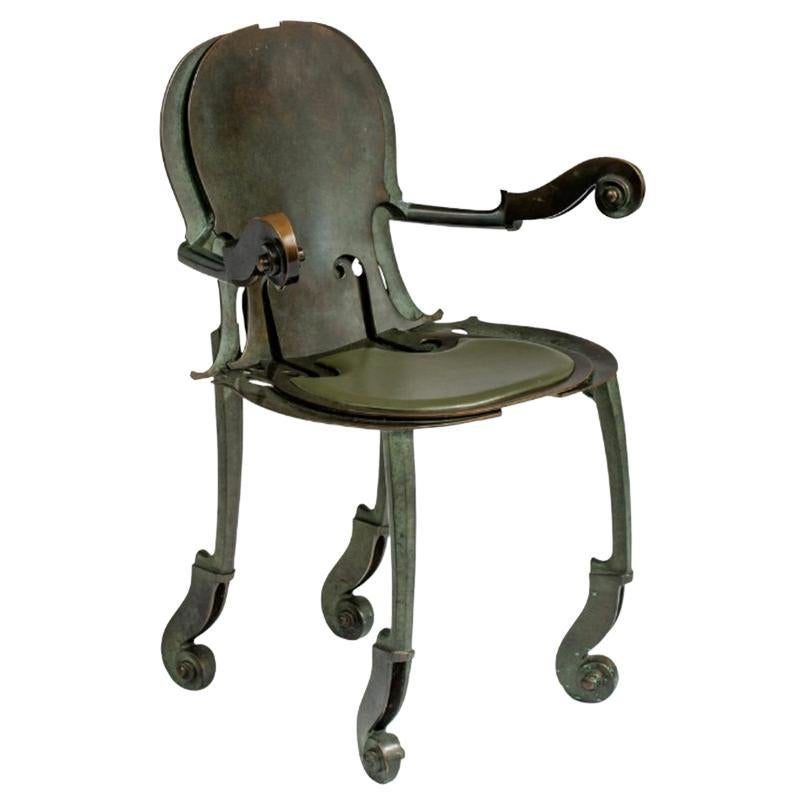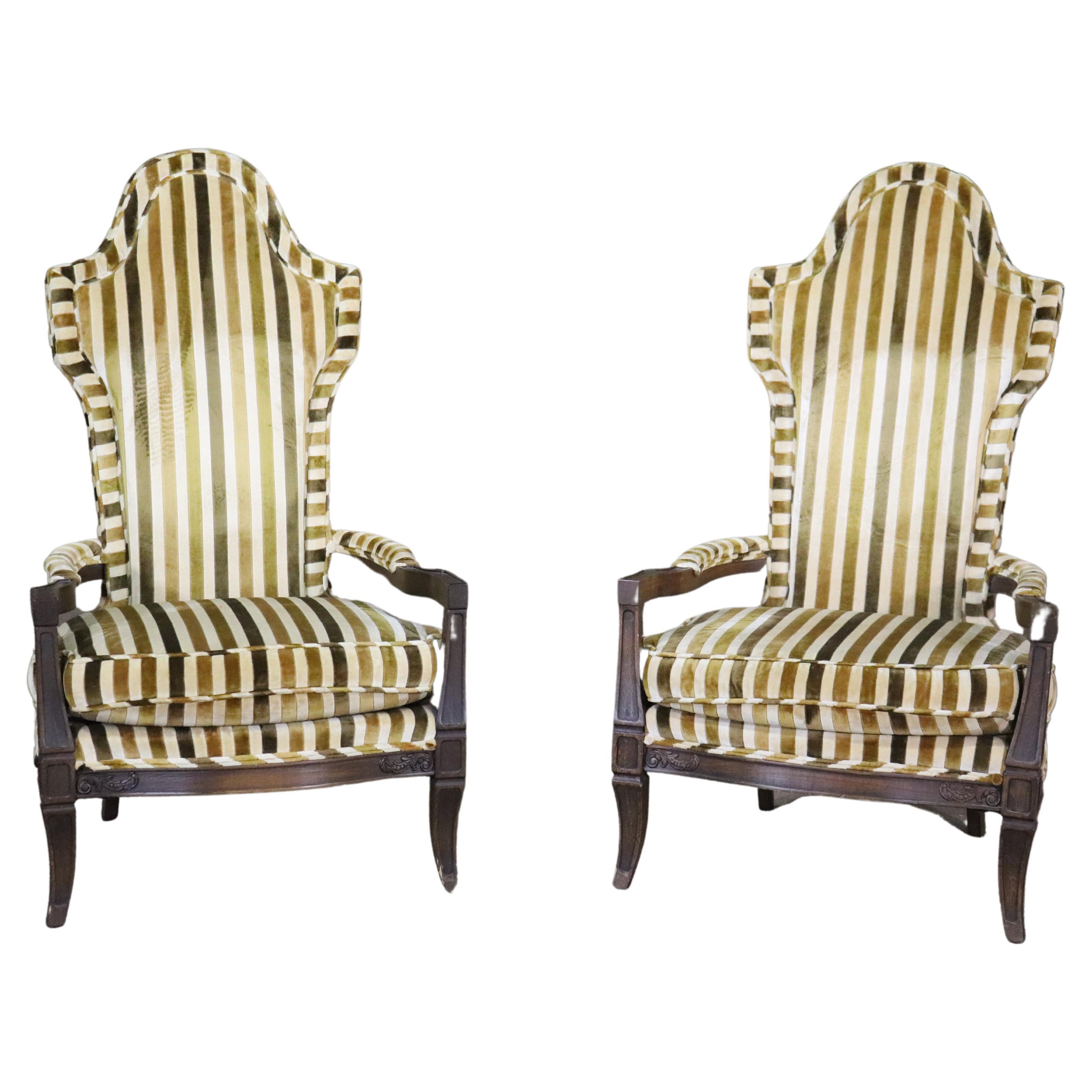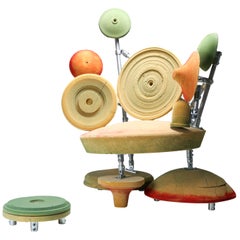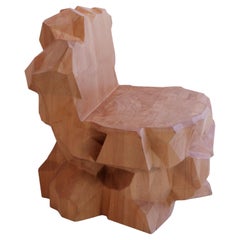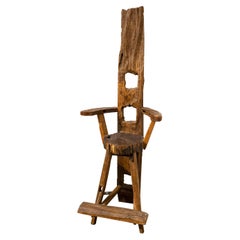
Sculptural Throne Chair
View Similar Items
Want more images or videos?
Request additional images or videos from the seller
1 of 10
Sculptural Throne Chair
About the Item
- Dimensions:Height: 47.25 in (120 cm)Width: 35.44 in (90 cm)Length: 47.25 in (120 cm)Seat Height: 21.66 in (55 cm)
- Style:Rustic (In the Style Of)
- Materials and Techniques:
- Place of Origin:
- Period:
- Date of Manufacture:1950
- Condition:Wear consistent with age and use.
- Seller Location:Antwerp, BE
- Reference Number:1stDibs: LU933423559252
About the Seller
4.8
Gold Seller
These expertly vetted sellers are highly rated and consistently exceed customer expectations.
Established in 2008
1stDibs seller since 2012
980 sales on 1stDibs
Typical response time: 10 hours
More From This SellerView All
- Functional Art Chair / Throne "'Spring Swab" by Lionel JadotBy Lionel JadotLocated in Antwerp, BECollectible design / Functional art, Lionel Jadot for Everyday Gallery, Belgium 2020 Born in Brussels in 1969, Lionel Jadot is an interior designer, artist, designer, filmmaker, adventurer. But all at once, preferably. Lionel Jadot is firing on all cylinders. ‘I never throw anything, I pick up everything. Not having a green thumb, I’m trying cuttings, weddings against nature. I never forget a line.’ He’s inviting us in subtle, off-beat worlds, on the edge of reality. Its material is made of dilated time. A wandering spirit, he seeks a protective balance in a hostile world. It is his constant questioning: what happens to the place where we live? For Lionel Jadot, everything is object, everything is history. He draws from other places, other times, and seeks what’s linking them. He sews, stitches, unpicks, blends materials, combines eras. He will enshrine some wood essence in metal, some mineral in a plant, the old in the new. ‘I take extra care to the joint between two materials.’ With him, there is always some play in the parts, as in a piece of machinery. From a kingdom to another, he provokes organic, viral growths, generating energy. Linking past and future, he never forgets a line. ‘I accumulate them.’ He’s inviting us in subtle worlds, off-beat, on the edge of reality. Are we in 1930 or in 2030? Both, no doubt. Its material is made of dilated time. The eye goes hand in hand with the ear. ‘When I walk into a place, I listen to the good (or bad) it does to me. An ineffable feeling.’ He recreates mutant buildings, like the future Royal Botanique, a 5 stars hotel housed in the Church of the Gesu, a former convent behind a 1940 façade. He talks about a ‘hotel object’, which he holds and turns around in his hand. A wandering spirit, he’s flirting with retro-futurism. The Jam, another hotel, is intended for urban travelers, fans of swiftness, fluidity and hospitality. He designs interiors as a set of objects: a motorcycle cut in concrete becomes a bar counter. He finds gothic cartoon echoes, from the likes of Moebius, Alejandro Jodorowsky, Enki Bilal, sets from Garage Hermétique and Blade Runner, a protective balance in a hostile world. Discovering Jadot’s little cosmos of collected and accumulated goods, it becomes clear that every element has its own story. I tried to collect them and in turn, devour them in the coming paragraphs. But first: the show is best experienced seated, barring the distinction between object of use and object of attention, they invite for different types of conversation. The seats, chairs, thrones all make us think of our own physical comportment, and of how the seat lends grandeur to the person sitting on it, by crowning its presence. The crackling floor, the felt walls and the diffuse light slow you down into an oddly absorbing environment, in which you are left puzzled. In the eclectic collages of objects, bits and pieces collected all over the world come together in ways practical, and logical, though possibly only in the artist’s mind. All his finds eventually seem to fall into place. Starting with the mere conception of a chair, rather than with a set-out plan or sketch, the works are intuitively construed out of an archive that one can only imagine the dimensions of. Things forgotten by others, precious for him, were all once designed for their own purpose. Here they find their fit as a base, a closing system or a balancing element. The first piece that opens the exhibition, the most throne-like of all seats in the show, builds around a chair of his grandmother, protected by mops, and harassed with bed springs. As you enter the space, you pass by a shell leaning over a yellow seat that stems from his old Mustang, and find a white stool piece with Mexican leather dog training whips— the white building blocks of which turn out to be dried molding material, as found and broken out of a bucket by workers every morning. Further, the stone piece that reminds one of the stone age, is indeed made of 400 million old rocks, and the soft seats are lent from construction, where these strokes of textile carry up the heaviest goods. In the corner — but as you walk this walk please be seated on any of the thrones and experience the work for a moment— the green fluffy cover is made by XXXX who remakes cartographies of warzones, one of which is here mounted on a flexible fishing chair. On an experience level, the conversation chair enhances self-confidence, while putting you literally in a good spot with the person you’re conversing with. The lamp perfectly shows the playful Cadavre Exquis...Category
2010s Belgian International Style Armchairs
MaterialsMetal
- 'T-Shink' Sprayed Textile Throne Chair, Lionel Jadot, Belgium, 2020By Lionel JadotLocated in Antwerp, BEThe 'T-Shink' functional art throne chair is constructed of elements from wooden moulds which date back to the 1950s and originally used to make stainless steel sinks...Category
2010s Belgian Post-Modern Chairs
MaterialsOther
- Carved Throne Chairs with Relief Design in Wood, 20th CenturyLocated in Antwerp, BEWood; Carved; Throne Chair; Side Chair; Relief Design; 20th Century; Europe; Woodworking; A pair of unusual antique throne chairs made of solid...Category
20th Century Gothic Revival Armchairs
MaterialsWood
- Functional Art Chair / Throne "Left at the End of the Corridor" by Lionel JadotBy Lionel JadotLocated in Antwerp, BE'Left At The End of the Corridor' conversation piece by Lionel Jadot for Everyday Gallery, 2020 Collectible Design / Functional art, Lionel Jadot for Everyday Gallery, Belgium 2020 Born in Brussels in 1969, Lionel Jadot is an interior designer, artist, designer, filmmaker, adventurer. But all at once, preferably. Lionel Jadot is firing on all cylinders. ‘I never throw anything, I pick up everything. Not having a green thumb, I’m trying cuttings, weddings against nature. I never forget a line.’ He’s inviting us in subtle, off-beat worlds, on the edge of reality. Its material is made of dilated time. A wandering spirit, he seeks a protective balance in a hostile world. It is his constant questioning: what happens to the place where we live? For Lionel Jadot, everything is object, everything is history. He draws from other places, other times, and seeks what’s linking them. He sews, stitches, unpicks, blends materials, combines eras. He will enshrine some wood essence in metal, some mineral in a plant, the old in the new. ‘I take extra care to the joint between two materials.’ With him, there is always some play in the parts, as in a piece of machinery. From a kingdom to another, he provokes organic, viral growths, generating energy. Linking past and future, he never forgets a line. ‘I accumulate them.’ He’s inviting us in subtle worlds, off-beat, on the edge of reality. Are we in 1930 or in 2030? Both, no doubt. Its material is made of dilated time. The eye goes hand in hand with the ear. ‘When I walk into a place, I listen to the good (or bad) it does to me. An ineffable feeling.’ He recreates mutant buildings, like the future Royal Botanique, a 5 stars hotel housed in the Church of the Gesu, a former convent behind a 1940 façade. He talks about a ‘hotel object’, which he holds and turns around in his hand. A wandering spirit, he’s flirting with retro-futurism. The Jam, another hotel, is intended for urban travelers, fans of swiftness, fluidity and hospitality. He designs interiors as a set of objects: a motorcycle cut in concrete becomes a bar counter. He finds gothic cartoon echoes, from the likes of Moebius, Alejandro Jodorowsky, Enki Bilal, sets from Garage Hermétique and Blade Runner, a protective balance in a hostile world. Discovering Jadot’s little cosmos of collected and accumulated goods, it becomes clear that every element has its own story. I tried to collect them and in turn, devour them in the coming paragraphs. But first: the show is best experienced seated, barring the distinction between object of use and object of attention, they invite for different types of conversation. The seats, chairs, thrones all make us think of our own physical comportment, and of how the seat lends grandeur to the person sitting on it, by crowning its presence. The crackling floor, the felt walls and the diffuse light slow you down into an oddly absorbing environment, in which you are left puzzled. In the eclectic collages of objects, bits and pieces collected all over the world come together in ways practical, and logical, though possibly only in the artist’s mind. All his finds eventually seem to fall into place. Starting with the mere conception of a chair, rather than with a set-out plan or sketch, the works are intuitively construed out of an archive that one can only imagine the dimensions of. Things forgotten by others, precious for him, were all once designed for their own purpose. Here they find their fit as a base, a closing system or a balancing element. The first piece that opens the exhibition, the most throne-like of all seats in the show, builds around a chair of his grandmother, protected by mops, and harassed with bed springs. As you enter the space, you pass by a shell leaning over a yellow seat that stems from his old Mustang, and find a white stool piece with Mexican leather dog training whips— the white building blocks of which turn out to be dried molding material, as found and broken out of a bucket by workers every morning. Further, the stone piece that reminds one of the stone age, is indeed made of 400 million old rocks, and the soft seats are lent from construction, where these strokes of textile carry up the heaviest goods. In the corner — but as you walk this walk please be seated on any of the thrones and experience the work for a moment— the green fluffy cover is made by XXXX who remakes cartographies of warzones, one of which is here mounted on a flexible fishing chair. On an experience level, the conversation chair enhances self-confidence, while putting you literally in a good spot with the person you’re conversing with. The lamp perfectly shows the playful Cadavre Exquis...Category
2010s Belgian Post-Modern Armchairs
MaterialsSteel
- Carved Throne Armchair in Gothic Style, France, 20th CenturyLocated in Antwerp, BEAntique; Throne; Gothic Style; Medieval; 19th century; 20th century; France; Brutalist; Eclectic Design; Carved throne armchair in leather and dark wood from 20th century France. D...Category
Early 20th Century French Gothic Armchairs
MaterialsMetal
- Folks 30 Chair by Serban Ionescu, 2021By Serban IonescuLocated in Antwerp, BESerban Ionescu; Folks Series; Functional Art; Sculpture Chair; Armchair; Side Chair; Conversation Piece; Art; Folks 30, 2021 This unique piece was on view in the exhibition "In Order of Appearance" by Serban Ionescu from 20/03/21-24/04/21 in Everyday Gallery in Antwerp, Belgium next to the solo show of Marria Pratts...Category
2010s Romanian Rustic Armchairs
MaterialsWood
You May Also Like
- "Mineral" Faceted Sculptural Chair in Wood by Dagoberto RodriguezLocated in Ibiza, Spain"Mineral" unique sculptural chair handmade in breechwood by the recognised Cuban artist Dagoberto Rodríguez, co-founder of the collective Los C...Category
2010s European Modern Armchairs
MaterialsWood, Beech
- Handcrafted Sculptural Wooden Throne, Germany, 1920Located in Madrid, ESSculptural walnut and olive wood chair with curved armrest. Hand-crafted work made with the remains of old farm implements in Germany in the 1920s. I...Category
Vintage 1920s German Armchairs
MaterialsWood
- Chinese Throne Hat ChairLocated in East Hampton, NYUnique Chinese throne armchair..... huge scale and very impressive.Category
20th Century Armchairs
$2,300 - 19th Century Throne ChairLocated in Los Angeles, CA19th century Italian throne chair. Water guild with 22-karat gold. New leather.Category
Antique 19th Century Italian Armchairs
MaterialsGold
- Italian Renaissance Walnut Throne ChairLocated in New York, NY19th century Italian Renaissance style walnut cardinal's throne chair with shell design canopy and column supports.Category
Antique 19th Century Italian Renaissance Armchairs
MaterialsWalnut
- Neo Renaissance throne chair 1890Located in Meulebeke, BEThis Neo renaissance throne chair is a unique and elegant piece of furniture that can decorate any room. This chair was made around 1890, duri...Category
Antique 1890s French Renaissance Armchairs
MaterialsLeather, Oak
